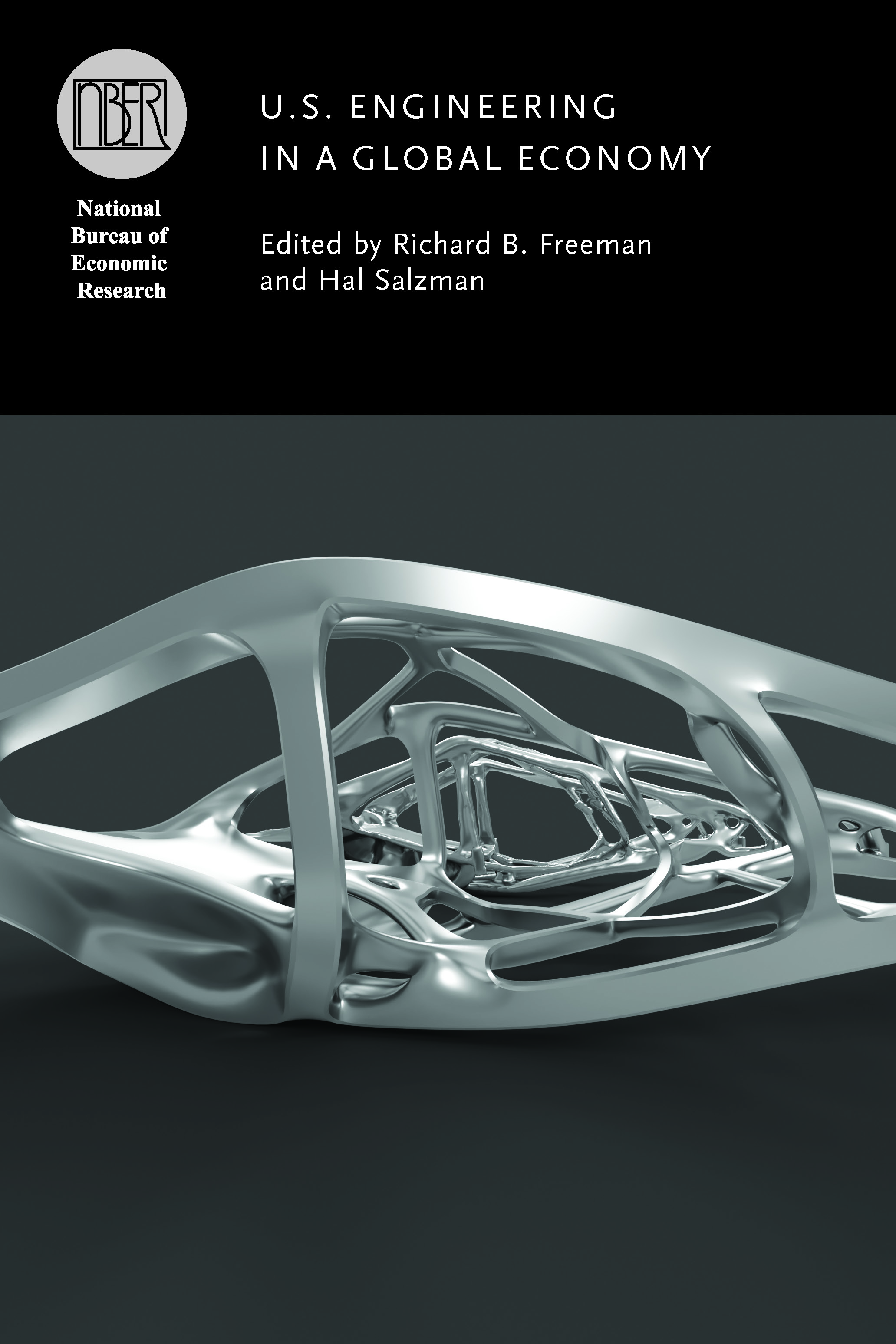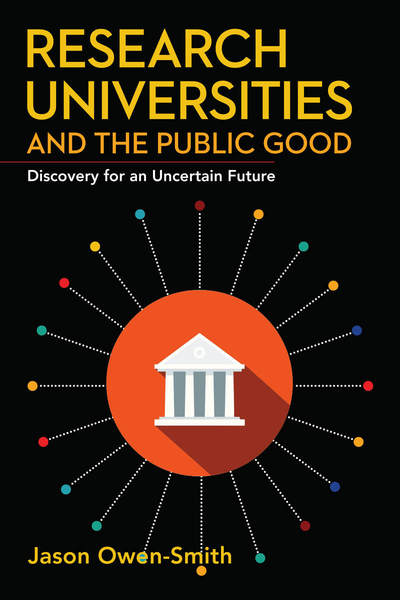Publications
Daniel Douglas, Hal Salzman, Khudodod Khudododov & Daniyal Rahmin (2023). The mismeasurement of STEM: evidence from college course classifications. https://doi.org/10.7282/00000318
STEM workforce Economic Policy Educational Administration and Policy Higher Education STEM Education Sociology Education Standard Reference Data
STEM acronymically refers to four areas of inquiry – Science, Technology, Engineering, and Mathematics. But as its use has become ubiquitous, STEM has taken on social and political meaning far beyond the sum of its component parts. In this paper, we take a first step in clarifying the analytic categories of STEM in education. This, we propose, is a necessary first building block for STEM analysis – to understand what constitutes STEM coursework, the constituent element of a STEM education. We first review the STEM definitional problems we have identified in the process of examining two sets of NCES nationally-representative data, provide analysis of the extent of potential mismeasurement, and estimates of impact. We then outline an approach to resolving the mismeasurement problems in nationally-representative postsecondary student surveys.
This research supported by grants from: Alfred P. Sloan Foundation (2012-6-13, and G-2016-7310), and the National Science Foundation (NSF-DGE-1561687)
Hal Salzman & Daniel Douglas (2023) STEM education and workforce development: the history, politics, and evidence. International Encyclopedia of Education, Elsevier Ltd, Fourth Edition, p.358-369. https://doi.org/10.1016/B978-0-12-818630-5.13065-9
The education and training of students and workers for careers in STEM fields is a longstanding concern of educators, development practitioners, analysts, and policymakers around the world. This chapter focuses on STEM workforce development in the United States in the context of global education migration and global enterprises that employ STEM graduates. It begins by addressing the politicized history of STEM workforce development, finding the STEM crisis theme is a perennial policy favorite in the US, appearing every few years as an urgent concern in the nation’s competition with whatever other nation is ascendant, or as the cause of whatever problem is ailing the domestic economy. Turning to the measurement of STEM supply and demand, we find it is fraught with difficulty and inconsistency. The entry concludes by considering the need for, and the obstacles to increasing the supply of STEM students at US colleges and universities. Overall, we find that STEM policy is often a response to broader anxieties and politics—whether about international threats or domestic economic crises—and is seldom based on substantial empirical analysis.
This research supported by grants from: Alfred P. Sloan Foundation (2012-6-13, and G-2016-7310), and the National Science Foundation (NSF-DGE-1561687)
Salzman, Hal & Benderly, Beryl Lieff (2019). STEM performance and supply: assessing the evidence for education policy. Journal of Science Education and Technology, 28(1), 9-25. https://doi.org/doi:10.7282/t3-7551-p083
As analyzed in this paper, the preponderance of evidence suggests that the U.S. education system has produced ample supplies of students to respond to STEM labor market demand. The “pipeline” of STEM-potential students is similarly strong and expanding.
Freeman, Richard B. & Salzman, Hal. U.S. Engineering in a Global Economy. https://doi.org/doi:10.7282/t3-vdx1-rc60
This book examines the educational pathways of undergraduate engineers and their entry into the labor market, the impact of engineers working in firms on productivity and innovation, and different dimensions of the changing engineering labor market, from licensing to changes in demand and guest worker programs.

Douglas, Daniel & Salzman, Hal (2019). Math counts: major and gender differences in college mathematics coursework. The Journal Of Higher Education. https://doi.org/doi:10.7282/t3-g8h5-ze50
Our analysis finds large variability both within and between STEM/non-STEM majors and a large population of non-STEM graduates earning mathematics credits comparable to their peers in STEM fields.
We also find that often observed gender differentials are a function of major, not gender, with females in the most mathematics-intensive programs earning as many or more mathematics credits than their male peers.
Kim, Jinseok. (2019). A fast and integrative algorithm for clustering performance evaluation in author name disambiguation. Scientometrics. 120. https://doi.org/10.1007/s11192-019-03143-7
Clustering results in author name disambiguation are often evaluated by measures such as Cluster-F, K-metric, Pairwise-F, Splitting and Lumping Error, and B-cubed. Although these measures have different evaluation approaches, this paper shows that they can be calculated in a single framework by a set of common steps that compare truth and predicted clusters through two hash tables recording information about name instances with their predicted cluster indices and frequencies of those indices per truth cluster.
Jinseok Kim. (2019) Scale‐free collaboration networks: An author name disambiguation perspective. Journal of the Association for Information Science & Technology, Association for Information Science & Technology, vol. 70(7), pages 685-700. https://doi.org/10.1002/asi.24158
Several studies have found that collaboration networks are scale‐free, proposing that such networks can be modeled by specific network evolution mechanisms like preferential attachment. This study argues that collaboration networks can look more or less scale‐free depending on the methods for resolving author name ambiguity in bibliographic data.
Kim, Jinseok & Kim, Jenna. (2019). Effect of Forename String on Author Name Disambiguation. Journal of the Association for Information Science and Technology. https://doi.org/10.1002/asi.24298
This study assesses the contributions of forenames in author name disambiguation using multiple labeled data sets under varying ratios and lengths of full forenames, reflecting real‐world scenarios in which an author is represented by forename variants (synonym) and some authors share the same forenames (homonym).
Owen-Smith, Jason. (2018). Research universities and the public good: discovery for an uncertain future. Stanford, CA: Stanford Business Books, An Imprint of Stanford University Press.
Research Universities and the Public Good offers a unique view of how universities work, what their purpose is, and why they are important.
Van Noy, Michelle & Matthew Zeidenberg (2017). Community College Pathways to the STEM Workforce: What Are They, Who Follows Them, and How? New Directions for Community Colleges. 2017(178). https://doi.org/10.1002/cc.20249
This chapter describes community college STEM programs, including transfer‐oriented science and engineering (S&E) programs and workforce‐oriented technician programs, and the characteristics and educational pathways of the students who enroll in these programs.
Salzman, Hal & Van Noy, Michelle (2014). Crossing the Boundaries: STEM Students in Four-Year and Community Colleges. Barriers and Opportunities in Completing 2- and 4-Year STEM Degrees. https://doi.org/doi:10.7282/T38W3GCD
This paper examines the role of community colleges for four-year STEM students as they move through their educational careers. It focuses on a student cohort who began their freshman year at a four-year college and the pathways that lead them to course taking or degrees at a community college.
Van Noy, Michelle & Matthew Zeidenberg (2014). Hidden STEM Producers: Community Colleges’ Multiple Contributions to STEM Education and Workforce Development. Barriers and Opportunities in Completing 2- and 4-Year STEM Degrees https://sites.nationalacademies.org/cs/groups/dbassesite/documents/webpage/dbasse_088831.pdf
This paper examines a nationally representative sample of STEM students to understand the types of programs they enroll in, their characteristics, and their enrollment patterns and outcomes.
Salzman, Hal & Lowell, B. Lindsay (2008). Making the Grade. Nature, 453(1 May 2008), 28-30. https://doi.org/doi:10.7282/T3Q241WW
This paper examines the international testing that is used to predict the grim future of US science and technology and provides evidence the results are being vastly misinterpreted.
